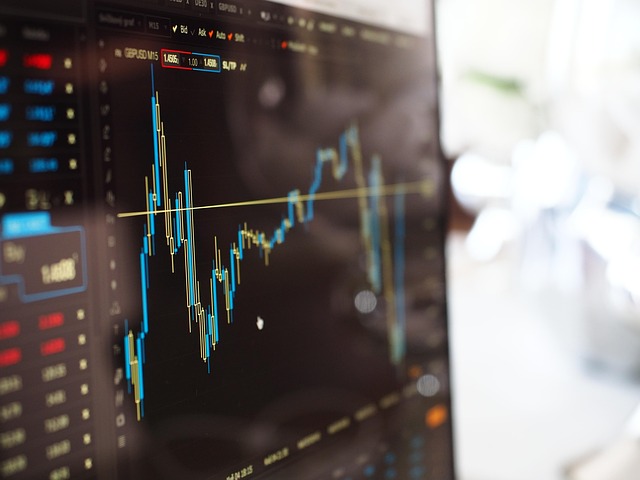Complete Guide to Binance Fees Margin Trading
Author: Jameson Richman Expert
Published On: 2025-11-04
Prepared by Jameson Richman and our team of experts with over a decade of experience in cryptocurrency and digital asset analysis. Learn more about us.
Binance fees margin trading can be confusing: you pay trading fees, margin interest, and sometimes liquidation costs. This guide explains how Binance charges for margin trading, compares cross vs isolated margin, shows step-by-step cost calculations, and provides practical tactics to reduce fees and risk. If you plan to open leveraged positions—or simply want to understand what you might pay—this article gives clear examples, links to authoritative sources, and actionable tips to keep your costs low and your positions safer.

What is margin trading and how Binance implements it?
Margin trading is borrowing assets to increase trading exposure (leverage). For basics, see the Wikipedia page on Margin (finance) and Leverage (finance). On Binance, margin trading is offered in two main forms:
- Cross (portfolio) margin: Shares margin across multiple positions in the same account; higher risk pooling but automatic risk reduction across assets.
- Isolated margin: Margin is confined to a single trading pair so losses do not affect other positions beyond the collateral in that pair.
Binance’s margin system includes borrowing (loans), trading fees for orders executed in margin accounts (often aligned with spot trading fees), and interest that accrues on borrowed assets. Always check official docs for up-to-date policies on Binance’s support pages: Binance Fees & Limits.
Components of Binance margin trading fees
When you trade on margin at Binance you should account for multiple fee types. The primary categories are:
- Trading fees (maker / taker): Charged when your order executes; usually same maker/taker structure as spot. Maker = provides liquidity (limit order), Taker = removes liquidity (market or taker order).
- Margin loan interest: Interest charged continuously on borrowed assets while the loan is open; rates vary by asset and borrow duration.
- Liquidation and penalty fees: If your margin ratio hits maintenance thresholds, positions may be liquidated and penalties apply.
- Funding (for derivatives, not classic margin): If you use futures instead of margin, expect periodic funding payments between long/short holders.
- Network/Withdrawal fees: When you move crypto off Binance, blockchain network fees apply (not a Binance margin-specific fee).
Trading fees: maker and taker
Binance’s trading fees are tiered based on 30-day trading volume and BNB holdings. For many users the base fee historically starts around 0.1% per trade (taker and maker may differ). Maker fees are typically lower than taker fees. Example:
- If maker fee = 0.08% and taker fee = 0.10% (example only), a $10,000 position entry (market order) would cost $10 (0.10%) as a taker fee.
- Using limit maker orders can reduce costs significantly—if your order executes as a maker, your fee could be 0.06% or lower depending on tier.
Note: Fee tiers and any BNB fee-discount levels change over time. Always confirm real-time fee schedules on Binance’s official fee page: Binance Fee Schedule.
Margin loan interest (borrowing cost)
Margin interest accrues on the amount you borrow. Rates depend on:
- The asset borrowed (BTC, ETH, USDT, etc.)
- Cross vs isolated margin (some assets have different rates for isolated margin)
- Borrow time (interest usually accrues hourly or daily)
Example formula for interest cost:
Interest = Borrowed Amount × Annual Interest Rate × (Days Held / 365)
Example calculation:
- You borrow 1 ETH at an annual interest rate of 6% to hold for 30 days.
- Interest = 1 ETH × 6% × (30/365) = 0.00493 ETH (~0.005 ETH).
This interest is in the borrowed asset currency. For USD-equivalent cost, multiply by the asset price when repaying.
Liquidation fees and maintenance margin
Binance maintains a maintenance margin requirement; if your margin ratio falls below that level due to losses + interest, the platform will liquidate part or all of your position. Liquidation often includes penalties on top of the usual trading fee — effectively raising the cost of a bad trade. To avoid liquidation fees:
- Monitor margin ratio frequently.
- Use stop losses.
- Prefer isolated margin when testing high-risk strategies.
How to calculate total cost of a margin trade on Binance — worked example
Let’s walk through a full example combining trading fees and borrowing interest so you can estimate actual cost before opening a position. This is a simplified scenario; real scenarios include slippage, funding (for futures), and varying interest accrual periods.
Scenario
- Account: Binance margin account (isolated) for ETH/USDT
- Collateral: 1,000 USDT
- Leverage: 5x — so you can open up to a 5,000 USDT ETH position
- Entry price ETH = 2,000 USDT → Position size = 2.5 ETH (5,000 / 2,000)
- Borrowed amount = 4,000 USDT (you put 1,000 USDT as collateral)
- Trading (taker) fee = 0.10% per trade
- Borrow interest (annual) for USDT = 8% (example)
- Hold time = 10 days
Step-by-step costs
- Entry trading fee: 0.10% of 5,000 USDT = 5 USDT
- Borrow interest cost: 4,000 × 8% × (10/365) = 8.77 USDT
- Exit trading fee: 0.10% of 5,000 USDT = 5 USDT
- Total direct cost: 5 + 8.77 + 5 = 18.77 USDT
So a round-trip margin trade in this example cost ~18.77 USDT in fees/interest, excluding slippage and potential liquidation penalties. Against a $5,000 position, that’s ~0.375%—not trivial when you factor into small-target strategies. For an accurate estimate, always plug in the current maker/taker fees and real-time interest rates from Binance’s margin info page.

Practical tips to reduce Binance margin trading fees
Cutting fees improves net returns. Here are effective, practical techniques:
- Use limit maker orders when possible: Maker fees are often lower. If your strategy allows a limit order that can sit and fill, you will usually pay less than market taker fees.
- Hold BNB for fee discounts: Binance historically offered fee discounts if you pay trading fees in BNB. Check current discounts on Binance and weigh cost of holding BNB vs savings.
- Upgrade VIP tiers: If you trade large volumes, higher VIP tiers lower maker/taker fees; evaluate whether your trading volume justifies the tier.
- Borrow only what you need and repay fast: Interest accrues over time—shorter loan durations reduce cost.
- Use isolated margin for high-risk trades: Restricts risk to a single position so you don’t lose collateral from other positions and may help you manage liquidation events.
- Monitor interest rates per asset: Rates vary by asset—if USDT is expensive to borrow, consider borrowing another stablecoin or asset with lower rates (but account for conversion costs).
- Plan entries to avoid multiple round-trips: Opening/closing frequently multiplies trading fees—reduce churn or use hedges where appropriate.
How to view and check Binance margin fees and interest rates
Before borrowing, always verify up-to-date rates:
- Log in and open your Margin Wallet on Binance.
- Click Borrow to see available assets and current interest rates (hourly/daily).
- Check the Fees or Fee Schedule page for your account tier to confirm maker/taker fees.
- For complex positions, run the math beforehand (see earlier example) to estimate total fees and interest.
If you’re not yet on Binance, consider this referral link to register: Register on Binance.
Margin vs futures vs options — fee differences
Compare the fee profile so you choose the right instrument:
- Margin trading: Pay trading fees + direct borrowing interest. Best if you want to hold real coins with leverage and avoid futures funding mechanics.
- Futures (perpetual): Trading fees + periodic funding payments between longs and shorts. Funding can add or subtract from costs depending on market sentiment. Read Bybit’s guides if you use derivatives: Bybit referral and related desktop app info: Bybit PC/Desktop App Guide.
- Options: Premiums paid upfront (no borrowing interest), with different margin/fee norms. For info on trading options on other exchanges, read Kraken options guidance: Can you trade crypto options on Kraken?

Alternatives and third-party integrations
Not satisfied with Binance? There are other platforms with different fee and borrowing structures:
- Bitget — competitive margins and mobile/desktop apps: Register on Bitget. See setup & security details here: Bitget App Download & Setup.
- MEXC — another exchange with unique fee tiers: Register on MEXC.
- Bybit — popular for derivatives: Bybit referral.
If you use trading platforms and want to connect charting tools, consider guides such as integrating Webull Futures to TradingView for strategy monitoring: Webull to TradingView workarounds.
Common mistakes that increase margin trading costs
Traders often pay more than necessary through avoidable errors:
- Not checking borrow rates: Borrowing a high-cost asset for long periods can eat profits.
- Using market taker orders unnecessarily: For small spreads and liquid markets, maker orders often suffice.
- Churning positions: Frequent entry/exit multiplies fees.
- Poor position sizing and leverage: Excessive leverage increases liquidation risk (and the chance you’ll pay liquidation penalties).
- Ignoring funding vs interest differences: Confusing futures funding with margin interest can lead to wrong cost expectations.
How to estimate breakeven move accounting for fees
To determine what price move you need to breakeven, include all costs (entry fee, exit fee, interest). Example formula for required percent move:
Required Return (%) ≈ (Total Costs / Position Size) × 100
Using the earlier example with total costs 18.77 USDT on a 5,000 USDT position, required return = (18.77 / 5000) × 100 ≈ 0.375%. On a leveraged trade, that required move can be reached quickly, but leverage amplifies losses if price moves against you.

Tax and reporting considerations
Margin trading may complicate tax reporting because you may realize gains/losses on the trades and have interest expense that could be deductible in some jurisdictions. Check local tax rules or consult a tax professional. For general crypto tax concepts consult government guidance relevant to your country or reputable sources such as the IRS (for U.S.) or HMRC (for U.K.).
Tools and resources to optimize trading and fees
- Fee calculators: Use Binance’s fee pages and calculators in demo mode to estimate costs before executing.
- Trading bots & scripts: Configure bots to use maker-only strategies to systematically reduce taker fees.
- Price alerts and automation: Limit slippage via limit orders and automation to reduce unintended taker fills.
- Education articles & market predictions: Read technical analysis and forecasts to avoid reactionary trading that may incur higher fees—example: Ethereum short-term forecasts can inform entry decisions: Ethereum price prediction and short-term forecast.
When margin trading makes sense — and when it doesn’t
Margin trading can magnify returns but also magnifies costs and losses. Consider margin trading if:
- You have a clear edge (strategy with positive expected value).
- You can manage risk with strict stop-losses and position sizing.
- You understand the borrowing interest and can hold for short durations to limit interest.
Avoid margin if:
- You can’t monitor positions frequently.
- You’re using excessive leverage to “gamble” rather than trade a plan.
- Your expected upside is small relative to the fees and interest you’ll pay.

Step-by-step: Open a margin trade on Binance with cost-conscious settings
- Create and fund a Binance account (register link: Register on Binance).
- Transfer assets to your Margin Wallet.
- Check the borrowable assets and current interest rates in the Borrow window.
- Choose isolated margin for experimental/higher-risk trades; choose cross if you want risk spread across assets.
- Place a limit maker order sized to your risk plan to capture maker fee savings.
- Monitor your margin ratio and set stop-losses to prevent liquidation and penalty fees.
- Repay borrowed assets as soon as you close profitable trades to stop interest accrual.
Further reading and external resources
For deeper knowledge about margin mechanics and comparative guides, consult:
- Binance official support and fee pages: Binance Fee Schedule
- General margin definitions: Wikipedia — Margin (finance)
- Leverage fundamentals: Wikipedia — Leverage (finance)
- Platform-specific guides for derivatives and apps: Bitget app setup Bitget Trading App Guide, Bybit PC app guide Bybit Desktop App Guide.
Conclusion — balancing cost and opportunity
Understanding binance fees margin trading is essential before using leverage. Fees consist of trading fees, borrowing interest, and potential liquidation penalties. By planning trades, preferring maker orders, minimizing borrow time, and using isolated margin for risky positions, you can reduce costs materially. Always confirm current maker/taker fees and asset-specific borrowing rates on Binance before trading—and consider alternative venues (Bitget, MEXC, Bybit) if their fee structure better fits your strategy: Bitget, MEXC, Bybit.
If you want advanced examples—such as ETH-specific cost modeling using ETH price scenarios—see the Ethereum short-term forecast and use that to simulate returns vs fees: ETH price prediction guide.
For traders who use integrations and multi-platform workflows, check these practical guides on connecting tools and trading apps: Webull–TradingView integration help and derivative app guides referenced above.
Risk disclaimer: Margin trading is high-risk and not suitable for all investors. This article is informational and does not constitute financial advice. Consult a licensed financial advisor for personalized guidance.